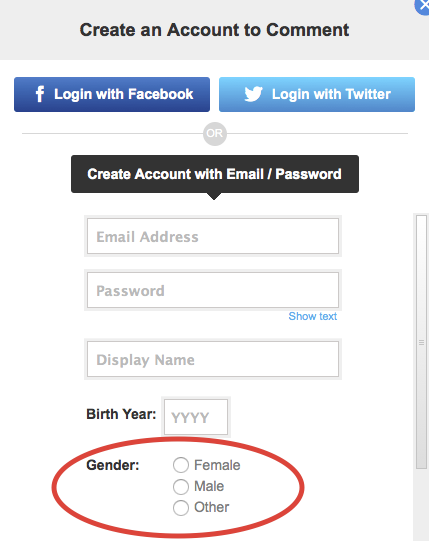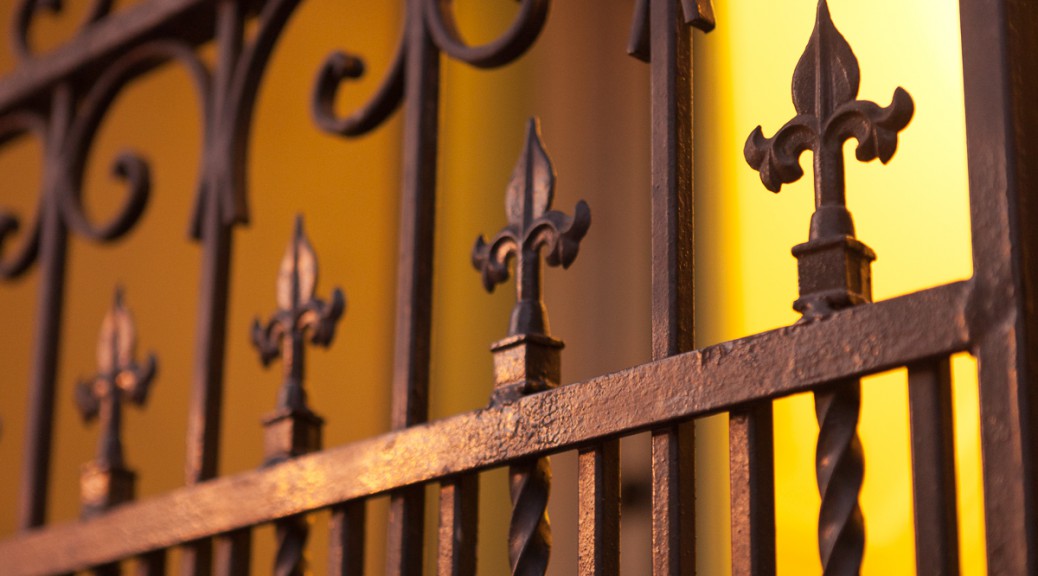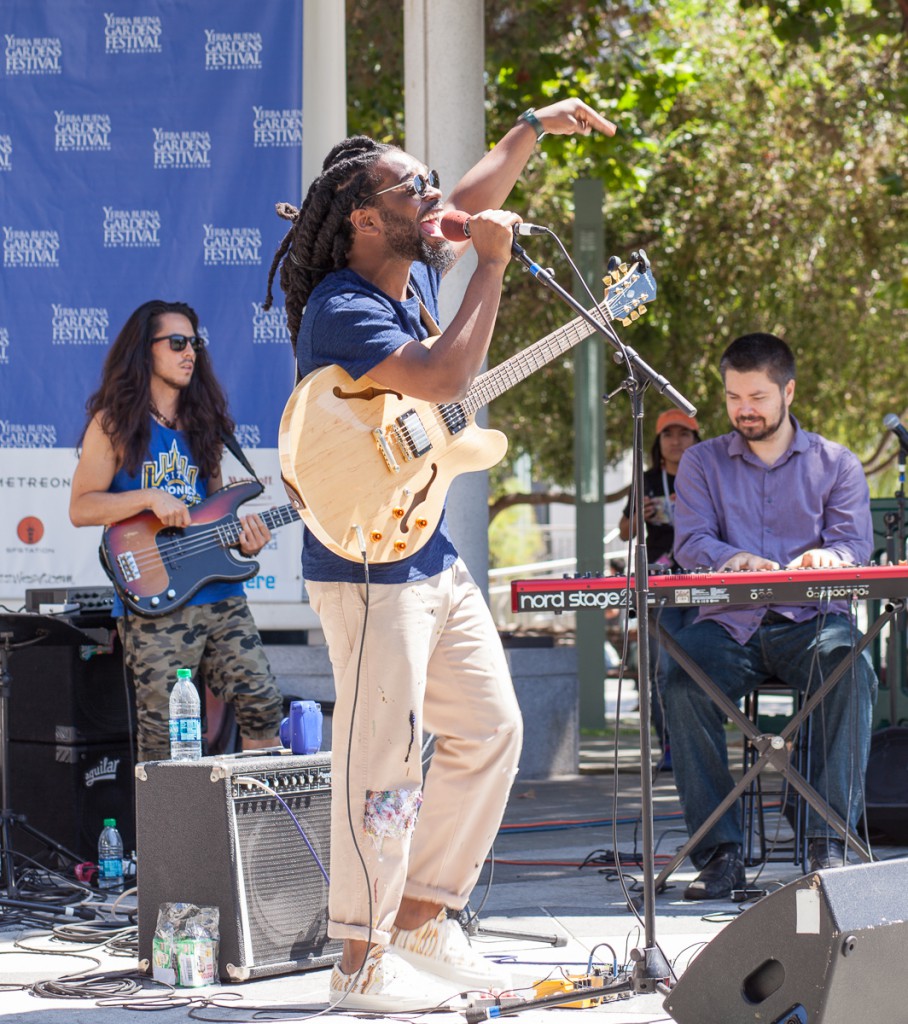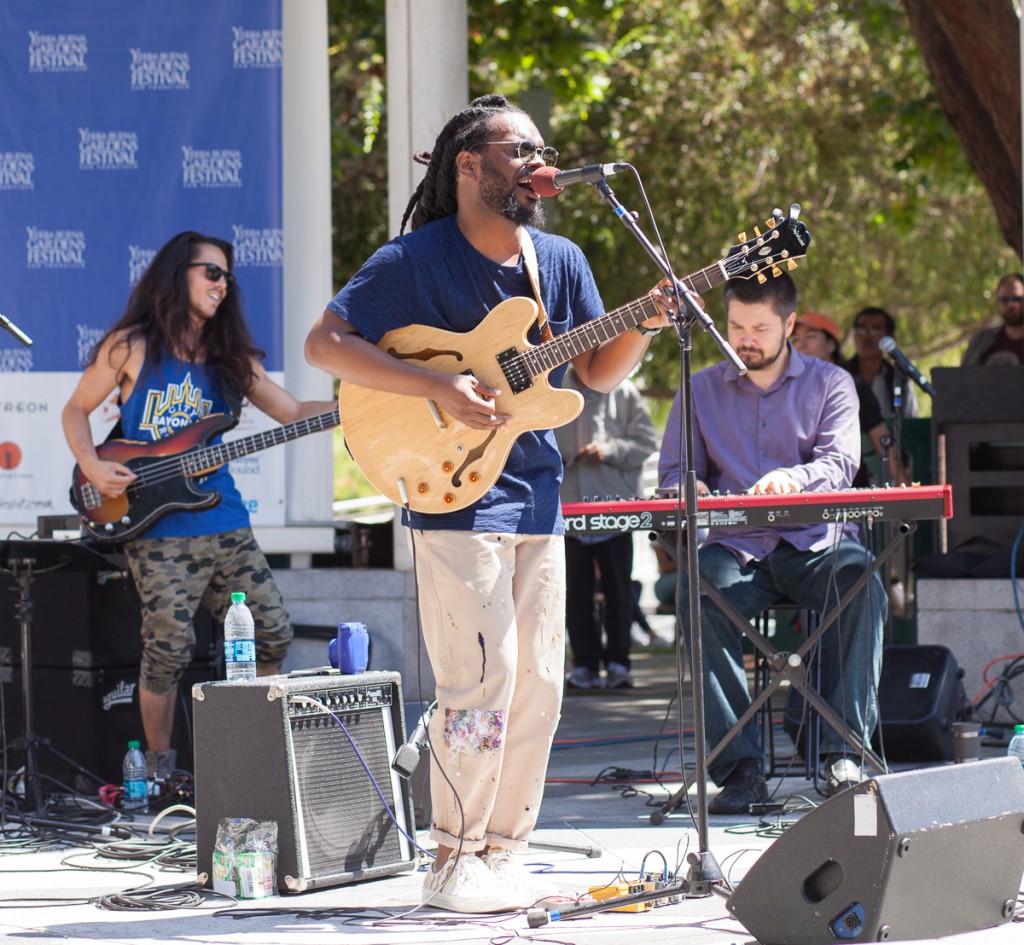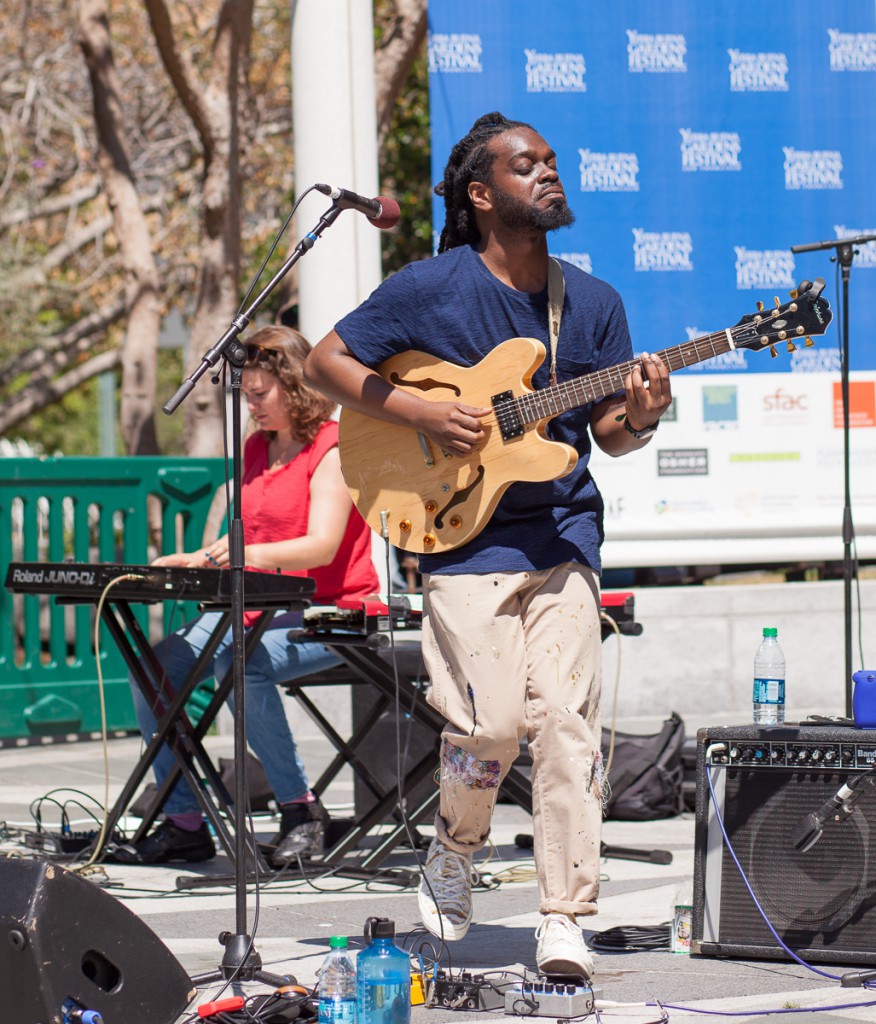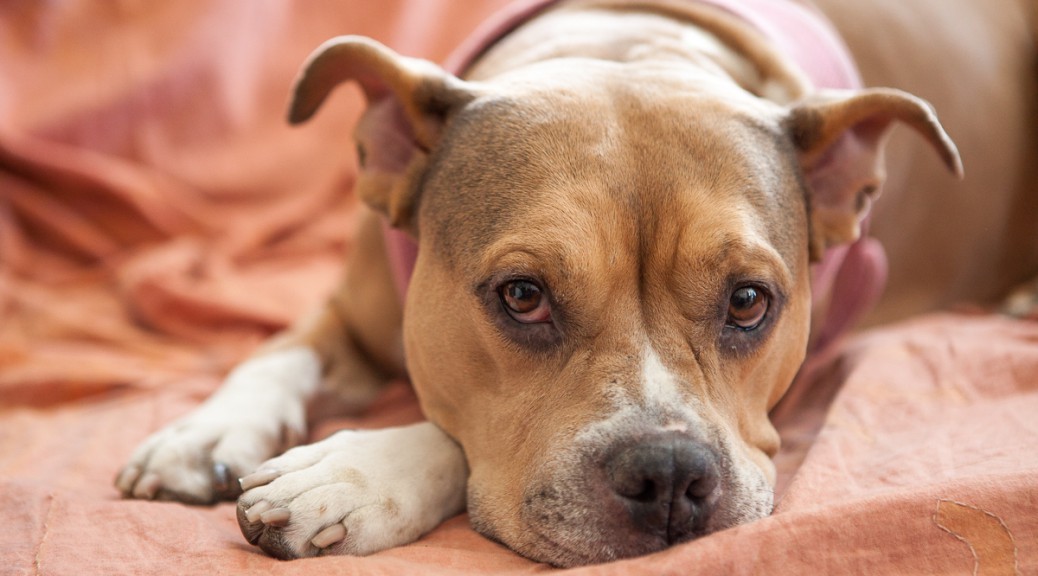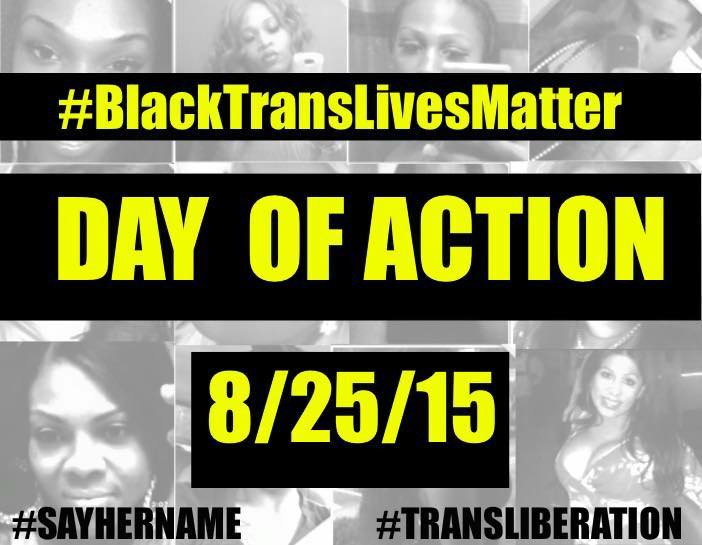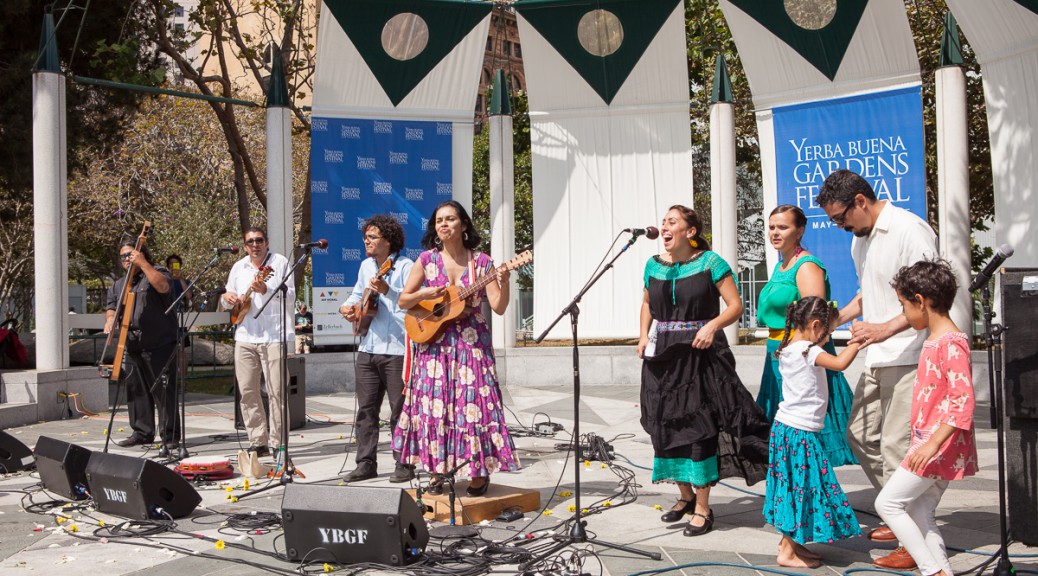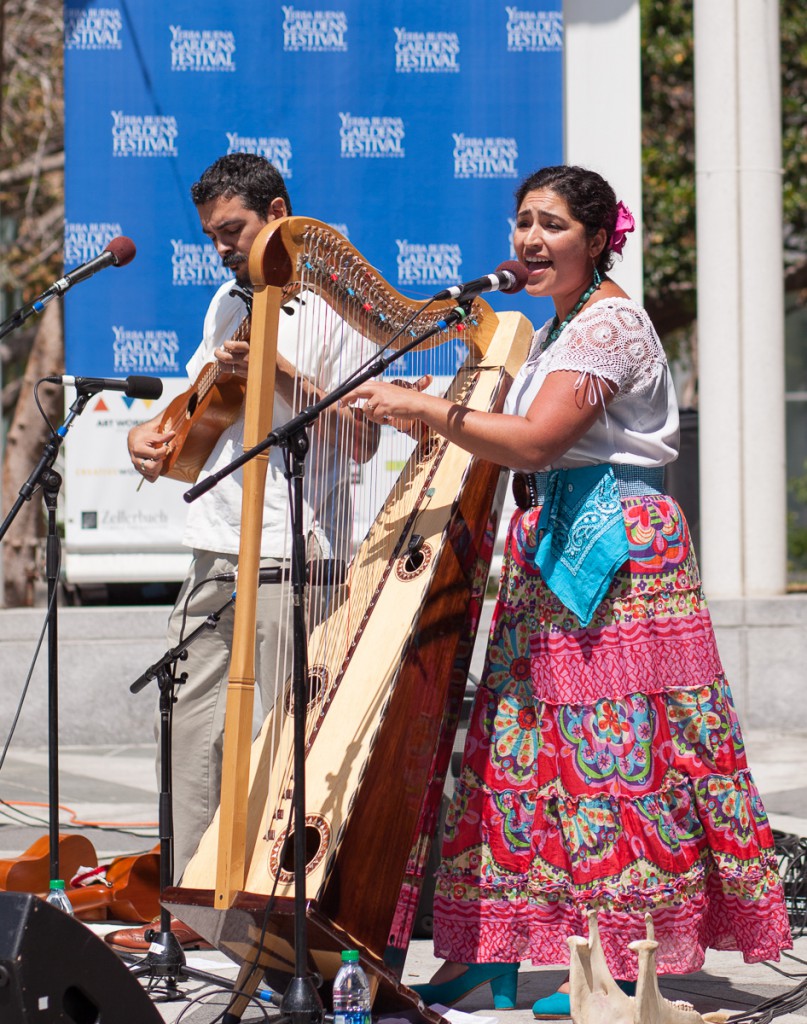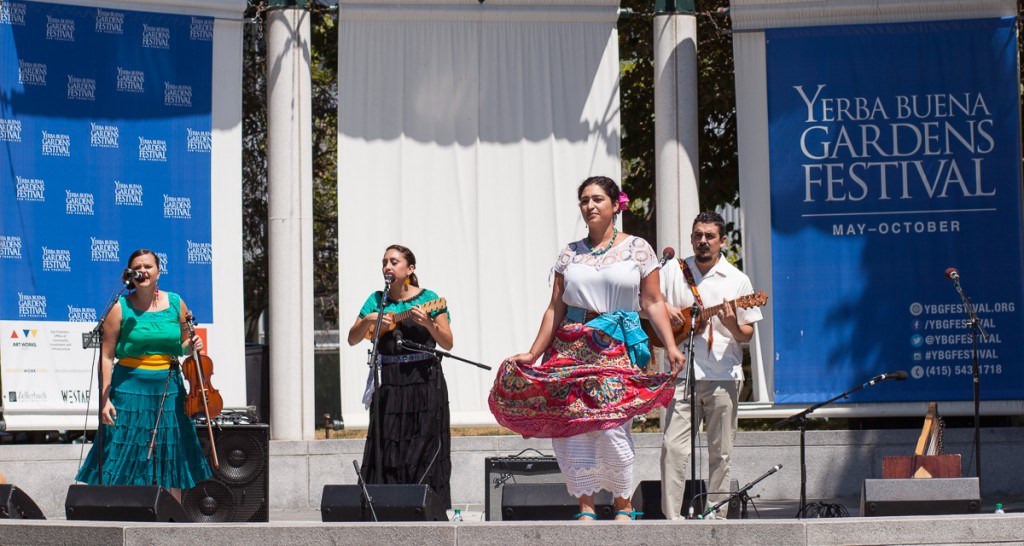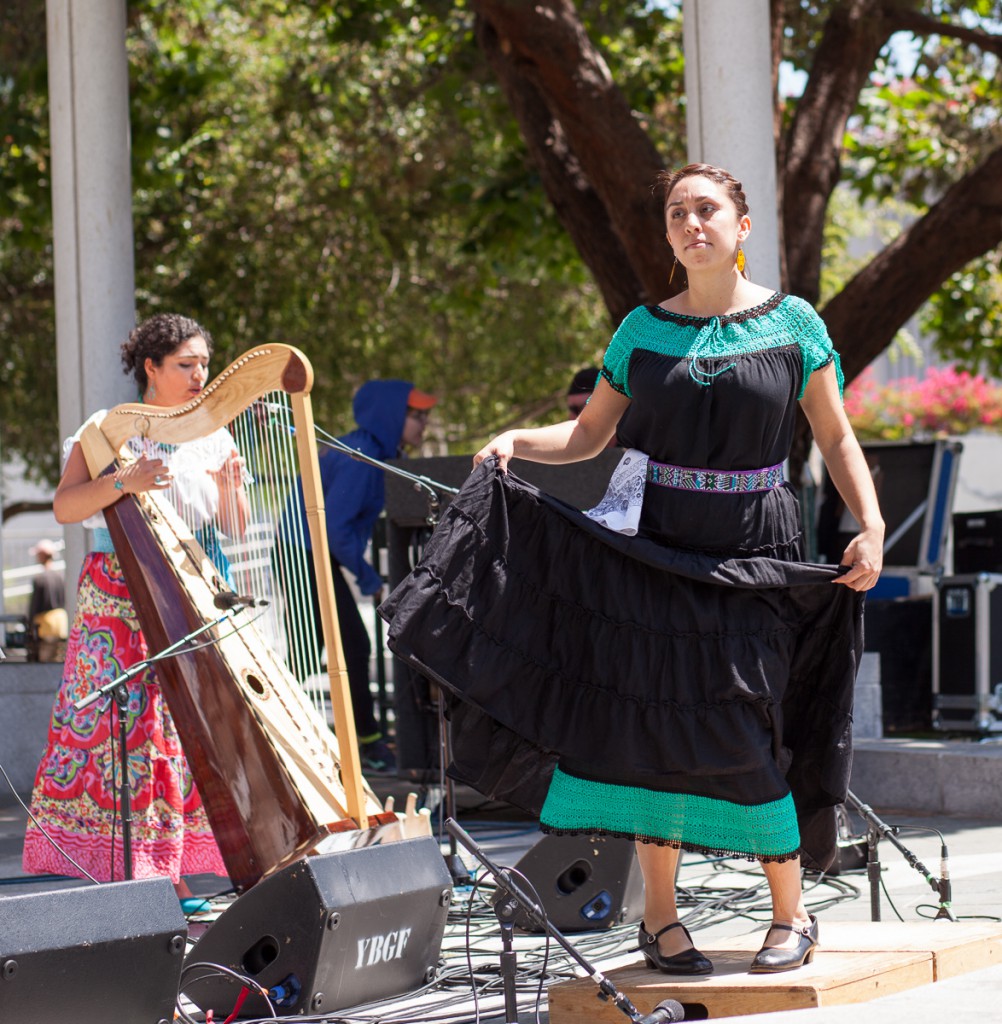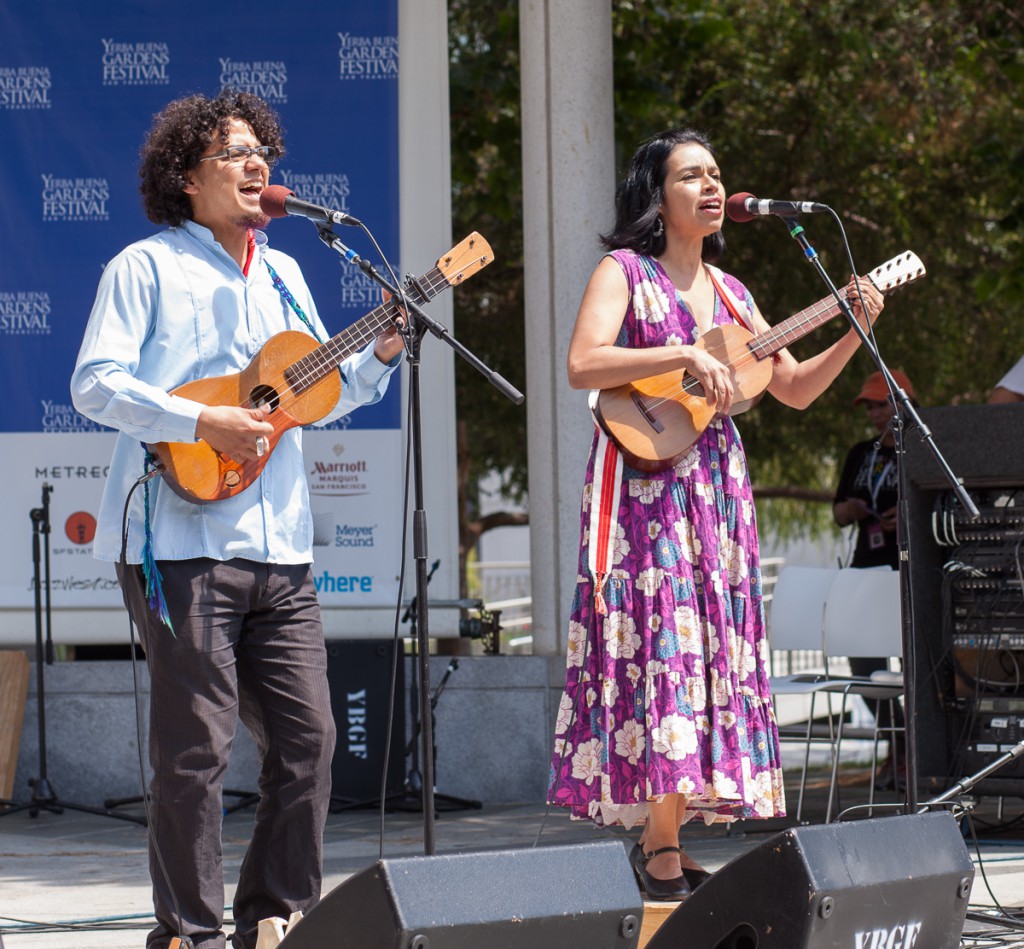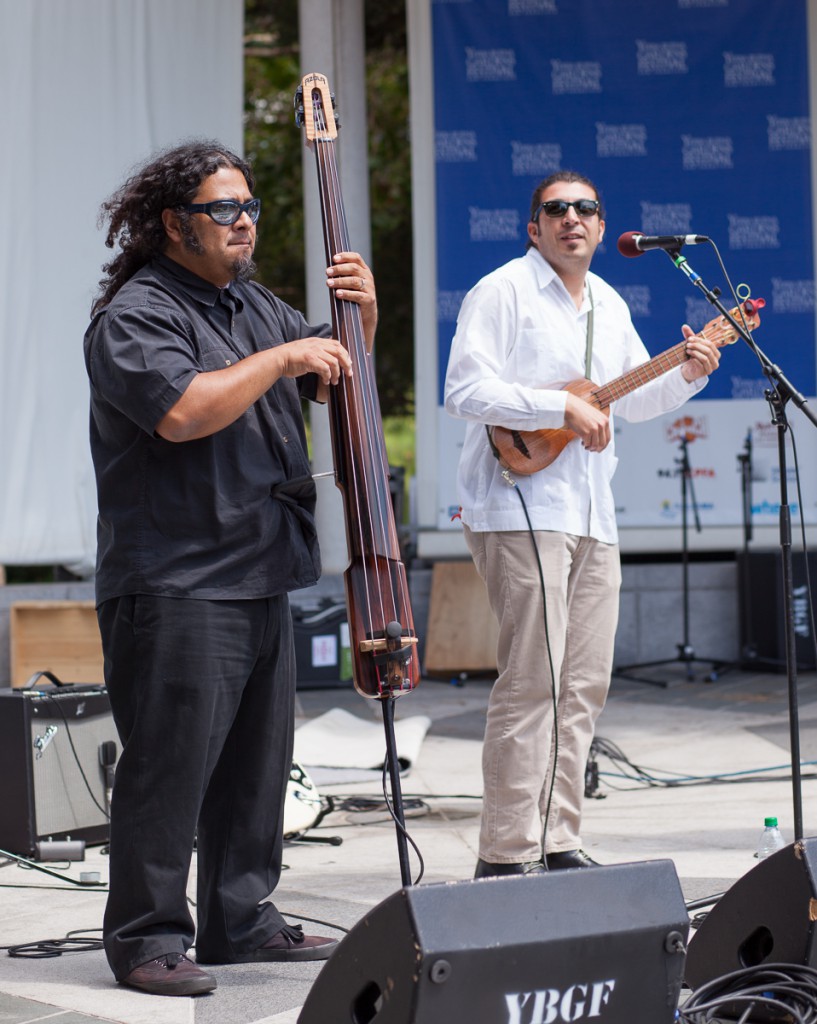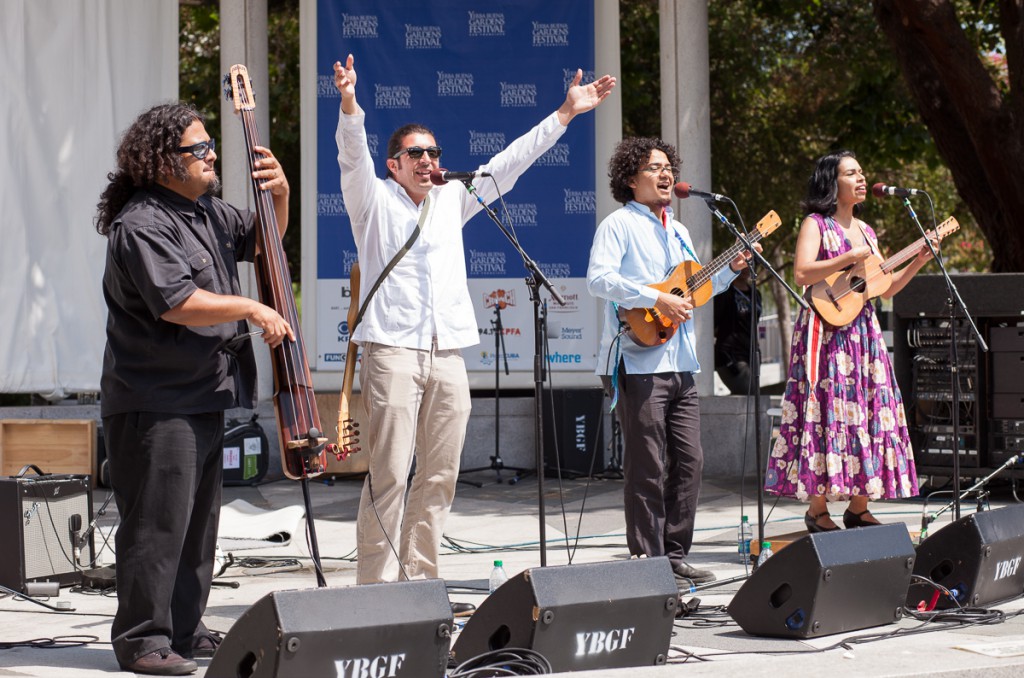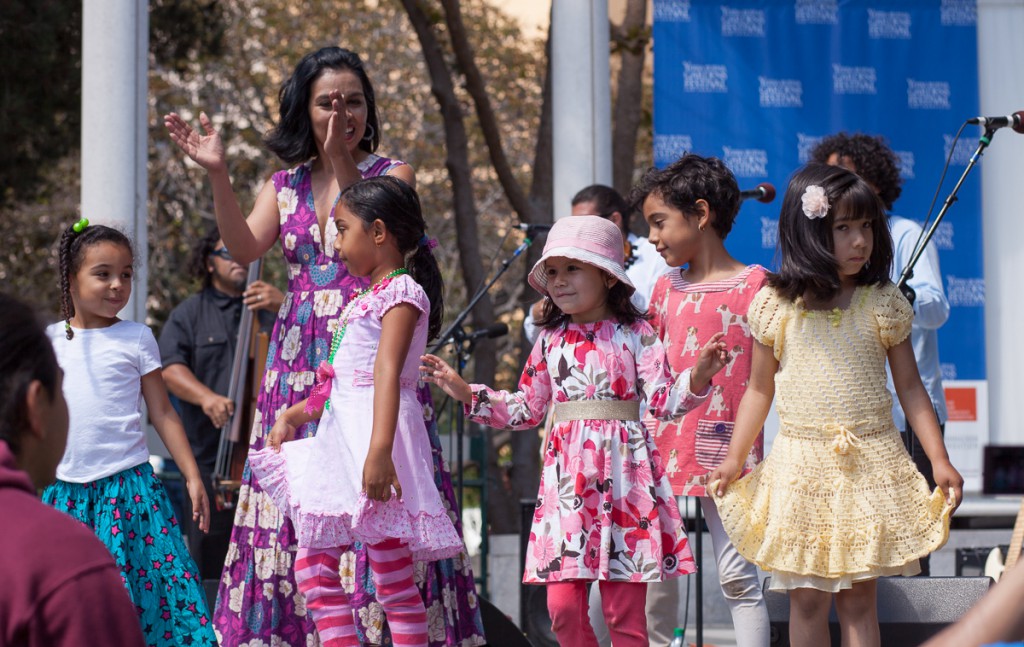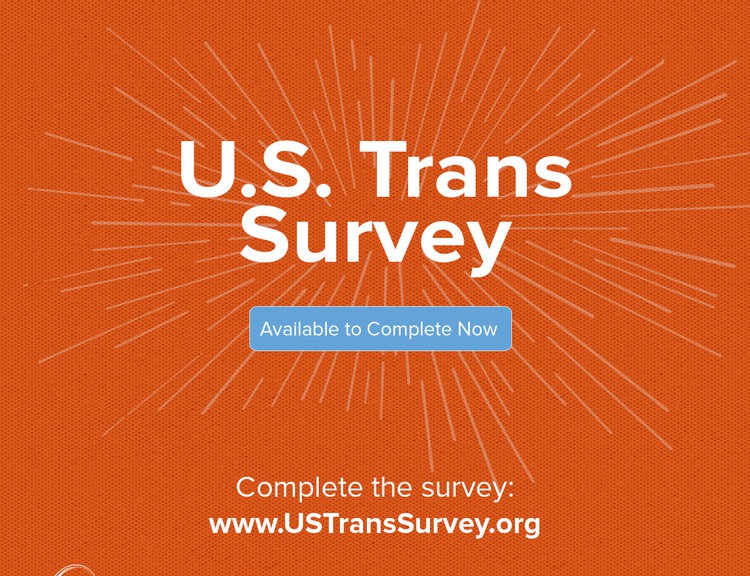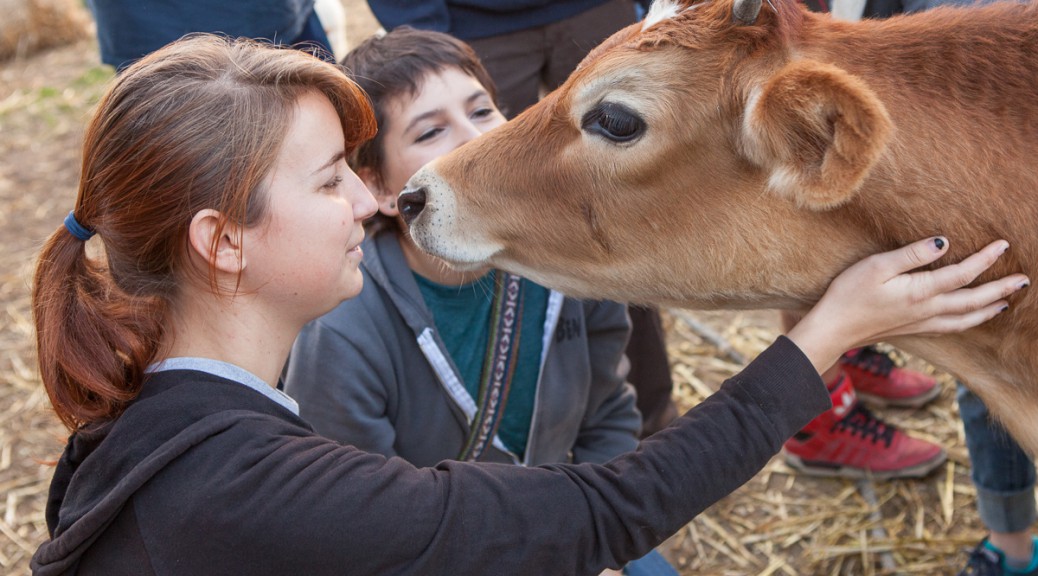[Image: Lisa, a pit bull with tan and white fur, relaxes on a sofa.]
Edit, June 2016: Since publishing this post I have left Direct Action Everywhere (DxE). My points about animal personhood still stand.
An insightful article about what it means to be human published yesterday on the Aphro-ism site got me thinking about how we define what a “person” is. Since I got involved in animal rights activism a year ago, the core of my philosophy has been that animals are people, not property. I’ve had this slogan as my profile photo on Facebook since soon after it was taken at this year’s DxE Forum (as part of The Faces We Fight With photo directory):
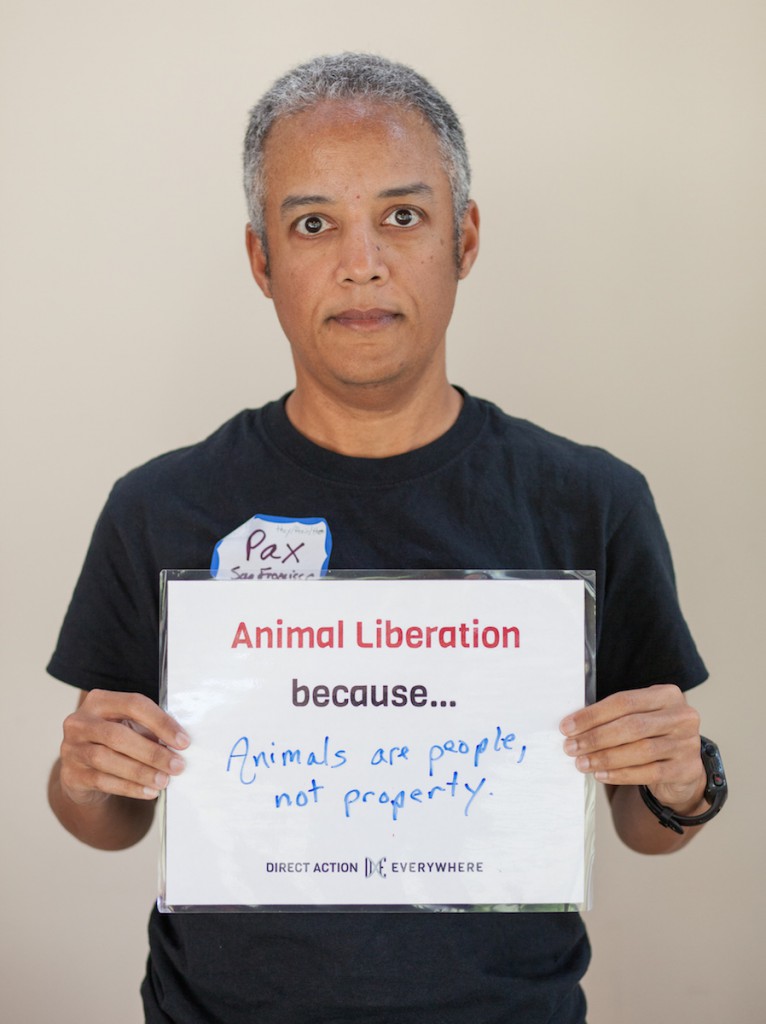
[Image: Pax holds a sign reading “Animal Liberation because… Animals are people, not property.”]
But what do I actually mean when I say “animals are people, not property?” Entire books have been written on this subject, with lots of academic jargon that many find inaccessible. I’m a grad school dropout and have no credentials in philosophy or any other academic subject, so I’ll try to keep it simple.
First of all, I’m an atheist, and I reject any notion that humans have a soul or other spiritual characteristics that set us apart from other animals. Anything written in a religious text that states or suggests that animals were created for humans to use is completely irrelevant to me. (I’m aware that many religions have a different conception of human-nonhuman relations, and that many believe that all living beings have souls, but I don’t want to stray into a discussion of comparative religion; I’m speaking from my own perspective, here.)
Second, there is no universal characteristic that humans have that other animals do not. Non-human animals have language (even if we humans can’t fully understand it). They make friends. They have families. Some of them use tools. Many modify their environments. The fact that humans have modified our environment to the point that we’ve taken over the Earth like a cancer does not, to me, merit granting us the exclusive title of “people.”
Many seem to confuse “person” with “citizen,” or at least “civilized person” (which, as the article I linked to at the top points out, is a white European conception of personhood). Some people make ridiculous, derailing statements about animal rights activists wanting to grant nonhumans the right to vote or to marry. The legal right to vote or marry does not define whether a human is a person or not. Societies that have these human rights defined must grant them to all regardless of race, gender, or other irrelevant characteristics, but species is not an irrelevant characteristic here.
A free-living animal has no use for voting or marriage. These are human concepts useful in a human society. Our votes do affect the lives of nonhuman animals, but this is because we insist on treating them as property, and on displacing “wild” animals from their homes for our own human developments.
Justice and equity are the goal of animal rights, not a false “equality” that pretends there’s no difference between a human, dog, pig, fish, or chicken. The most important things all of these animals have in common are the ability to feel and the desire to live, and none of them can consent to be used as the property of another. Until animals are viewed as individual persons, they will never receive justice, no matter how many welfare reforms are put into place to make them more comfortable while they are exploited and killed by humans. A person who is the property of another can never truly be free.
I’m well aware that my view is controversial, and outright offensive to many. Women, people of color, and LGBTQIA+ people who have been viewed as sub-human for centuries often do not take kindly to being lumped in with other animals. As a queer black agender trans male, I am a member of several of those oppressed groups, and speak out frequently against sexism, racism, heterosexism, and cissexism. I hope this might convince others that the argument that nonhuman animals are people, too, is not merely a tool of privileged white veganism. I am an animal, and I am a person, and I seek to liberate all animals from property status.
Like this:
Like Loading...
